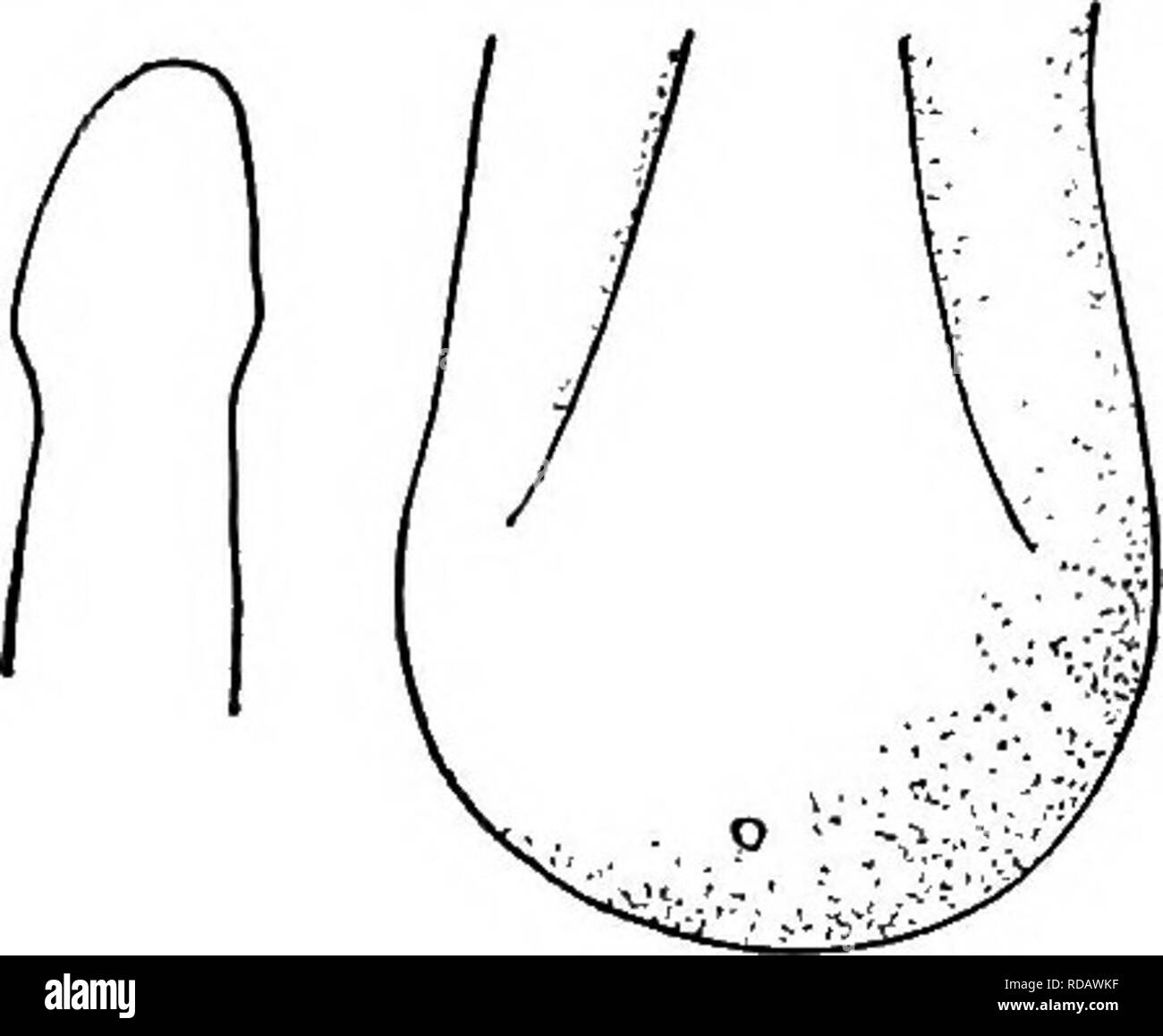. Fresh-water biology. Freshwater biology. 542 FRESH-WATER BIOLOGY 30(27) Areoles not ebi'ited, usually separated; head usually flattened; interareolar groups of fine hairs. 5<fcQa Gordius platycephalus ^Sl Montgomery 1898. For male and range of this species consult 21 in this key. Female up to 335 mm. long, 1.4 mm. broad. Posterior end slightly enlarged. Color brown; tip of head Ughter; dark ring around neck.. 'MS^o) Fig. 844. Gordius platycephalus Q ; head in dorsal aspect, tail in ventral aspect, and surface view of cuticula. Magnified. (After Montgomery.) ACANTHOCEPHALA The Acanthocepha

Image details
Contributor:
The Book Worm / Alamy Stock PhotoImage ID:
RDAWKFFile size:
7.2 MB (132.6 KB Compressed download)Releases:
Model - no | Property - noDo I need a release?Dimensions:
1744 x 1433 px | 29.5 x 24.3 cm | 11.6 x 9.6 inches | 150dpiMore information:
This image is a public domain image, which means either that copyright has expired in the image or the copyright holder has waived their copyright. Alamy charges you a fee for access to the high resolution copy of the image.
This image could have imperfections as it’s either historical or reportage.
. Fresh-water biology. Freshwater biology. 542 FRESH-WATER BIOLOGY 30(27) Areoles not ebi'ited, usually separated; head usually flattened; interareolar groups of fine hairs. 5<fcQa Gordius platycephalus ^Sl Montgomery 1898. For male and range of this species consult 21 in this key. Female up to 335 mm. long, 1.4 mm. broad. Posterior end slightly enlarged. Color brown; tip of head Ughter; dark ring around neck.. 'MS^o) Fig. 844. Gordius platycephalus Q ; head in dorsal aspect, tail in ventral aspect, and surface view of cuticula. Magnified. (After Montgomery.) ACANTHOCEPHALA The Acanthocephala or proboscis roundworms constitute a most remarkable group both in the extreme adaptation to the parasitic habit which they manifest and in the unique structure which pre- sents little or no parallel to any other type of animal. Most of them are small, measuring only a few milUmeters in length although the common parasite of the pig, Gigantorhynchus himdinaceus (commonly called Echinorhynchus gigas), reaches a length of 15 cm. in the male and 30 to 50 cm. in the female. In form they are elongate, roughly cyKndrical, or spindle-shaped but with several distinct regions that give the body an irregular form. These regions are a retractile proboscis armed with hooks, a neck, and a body proper. When examined living the body is often flattened or slightly bent, and displays a surface irregularly roughened or marked by transverse ridges of var3dng size. When removed to normal salt solution or preserved in other fluids, they tend to assume a smooth rounded form, sometimes with slight regular annulations that suggest segmentation but in fact do not extend beyond the dermal layer. At the anterior end the proboscis, which is retractile and in pre- served specimens often partly or wholly withdrawn into the body, presents a variable form being in various species cyHndrical, glo- bose, filiform, spindle-shaped, and even more complex; it may be long or short, straight, oblique, or at right